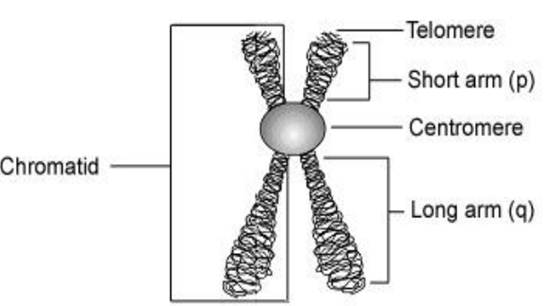


 النبات
النبات
 الحيوان
الحيوان
 الأحياء المجهرية
الأحياء المجهرية
 علم الأمراض
علم الأمراض
 التقانة الإحيائية
التقانة الإحيائية
 التقنية الحيوية المكروبية
التقنية الحيوية المكروبية
 التقنية الحياتية النانوية
التقنية الحياتية النانوية
 علم الأجنة
علم الأجنة
 الأحياء الجزيئي
الأحياء الجزيئي
 علم وظائف الأعضاء
علم وظائف الأعضاء
 الغدد
الغدد
 المضادات الحيوية
المضادات الحيوية|
Read More
Date: 16-2-2016
Date: 4-5-2016
Date: 15-2-2016
|
Cytogenetics
Cytogenetics is the study of chromosomes, the structures inside a cell that carry DNA. There are two copies of each chromosome in every cell of an organism. One set of chromosomes originates from the mother and one set from the father. Many diseases and birth defects are a direct result of missing, broken, rearranged, or extra chromosomes. Scientists called cytogeneticist can recognize and identify many of these gross chromosomal abnormalities by examining chromosomes through a microscope.
Cytogeneticists use three things to tell chromosomes apart:
- chromosome size
- The position of the centromere
- Characteristic banding patterns of alternating light and dark bands (caused by staining the chromosomes with dyes)
What is cytogenetics?
Cytogenetics is the study of chromosomes, the structures that carry genes.
How is DNA condensed into a chromosome?
By wrapping around histone proteins and then forming compressed loops of DNA.
What are the parts of a chromosome?
Telomere – The ends of the chromosome
Centromere – The primary constriction of the chromosome. The centromere also divides the chromosome into a short arm (p) and a long arm (q)
Chromatid – A single molecule of DNA

How are chromosomes classified?
By size and position of centromere:
Metacentric – centromere in the middle of the chromosome
Submetacentric – centromere divides the chromosome into 1/3 and 2/3
Acrocentric – centromere near the end of the chromosome

Mitosis
Interphase – DNA replicates- 2 double-stranded DNA molecules
Prophase – DNA condenses into chromosomes
Metaphase – Chromosomes are maximally condensed and line up along the equatorial plate
Anaphase – Chromosomes are pulled apart into individual chromatids
Telophase – Two daughter cells are formed with exact copies of the original DNA
Why do we care?
Many diseases and birth defects are a direct result of missing, broken, or extra chromosomes.
For example:
Down Syndrome: three copies of chromosome 21 (+21)
Cri du chat Syndrome: missing part of the short arm of chromosome 5 (5p- )
Turner Syndrome, 45,X: missing one of the sex chromosomes
How are these syndromes diagnosed?
Cytogeneticists determine the chromosomal make up of an individual by using karyotypes.
Chromosome Preparation
- Culture blood in media and bovine calf serum
- PHA - a mitogen is added to stimulate white blood cells to divide in culture
- Centrifuge cells - white blood cells go to the bottom of the tube (red cells on top)
- Hypotonic solution - causes white blood cells to swell and ruptures the red cells
- Fixation of cells - stabilizes cells and chromosomes
- Drop cells onto slides - cells burst open and chromosomes fall out
- Band chromosomes by staining with Giemsa
- Analyze under the microscope
Molecular Cytogenetics:
1- Fluorescence in situ hybridization (FISH)
Instead of staining chromosomes with a dye, molecular probes are detected with a fluorescent label to determine the presence or absence of chromosomes, specific DNA sequences or genes.
2-Comparative genomic hybridization (CGH) or Chromosomal Microarray Analysis
)CMA) is a molecular-cytogenetic method for the analysis of copy number changes (gains/losses) in the DNA content of a given subject's DNA and often in tumor cells. CGH will detect only unbalanced chromosomal changes. Structural chromosome aberrations such as balanced reciprocal translocations or inversions cannot be detected, as they do not change the copy number.



|
|
|
|
لصحة القلب والأمعاء.. 8 أطعمة لا غنى عنها
|
|
|
|
|
|
|
حل سحري لخلايا البيروفسكايت الشمسية.. يرفع كفاءتها إلى 26%
|
|
|
|
|
|
|
جامعة الكفيل تحتفي بذكرى ولادة الإمام محمد الجواد (عليه السلام)
|
|
|